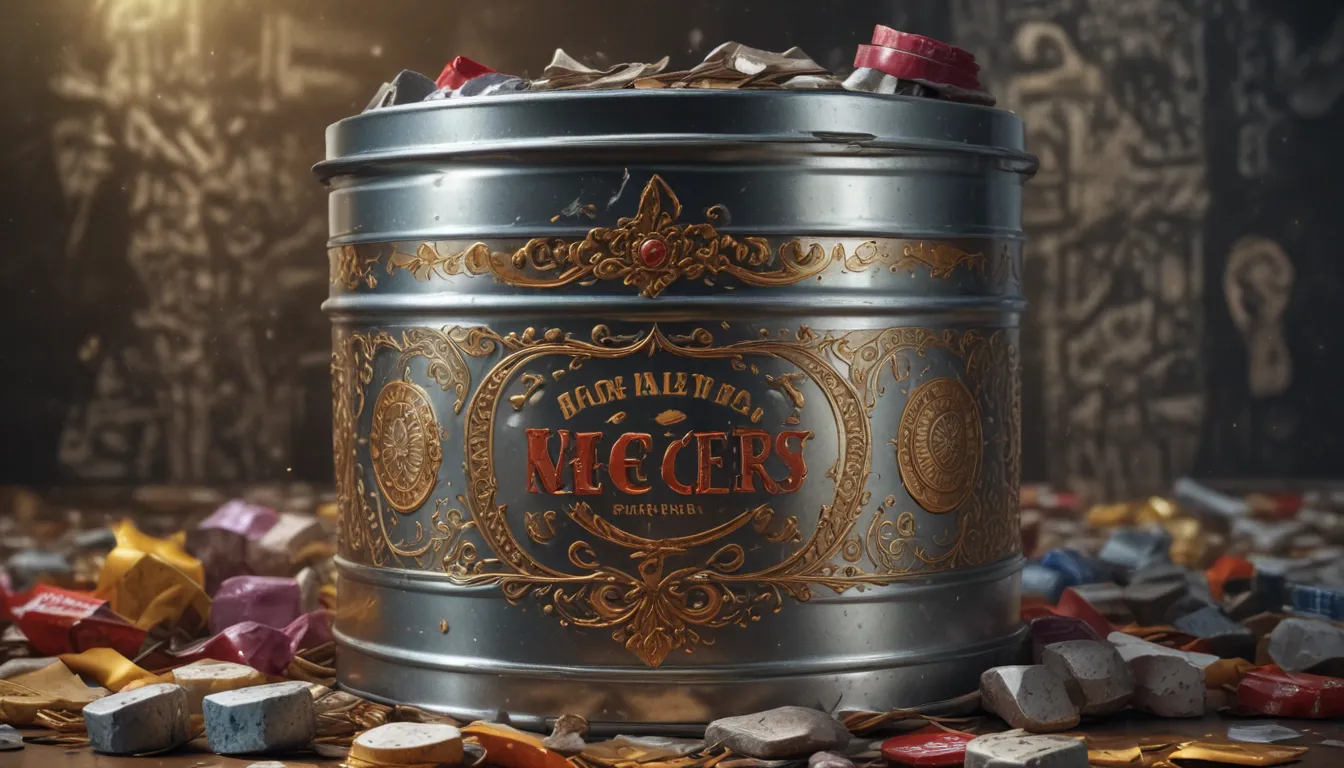A Note About Images: The images used in our articles are for illustration purposes only and may not exactly match the content. They are meant to engage readers, but the text should be relied upon for accurate information.
Are you eager to explore the captivating world of tin? This article will delve into 18 intriguing facts about this remarkable chemical element. From its ancient history to its modern applications, tin has played a crucial role in shaping human civilization. Whether you have a passion for chemistry or simply a curious mind, these fun facts will illuminate the versatility and significance of tin. Let’s embark on a journey to discover the unique and valuable aspects of tin that make it an essential element in various industries.
Unveiling the Versatility of Tin:
- Tin, an ancient metal, is essential for making bronze, preventing corrosion, and producing lead-free solders. Its unique characteristics, such as the “tin cry” and low melting point, add to its versatility and value.
Exploring the Fascinating World of Tin:
Tin is a truly fascinating element with a rich history and a wide range of uses. Here are 18 fun facts that highlight the importance and versatility of tin:
Tin Through the Ages:
-
Tin has been utilized by humans for thousands of years, dating back to its use in bronze production around 3000 BC, making it one of the earliest metals known to humanity.
-
With an atomic number of 50 and the symbol Sn derived from the Latin word “stannum,” tin occupies a significant place in the periodic table.
Properties and Characteristics of Tin:
-
Tin’s silvery-white appearance with a faint yellow tinge makes it a popular choice in various industries, thanks to its lustrous and malleable nature.
-
Its relatively low melting point of 231.93 degrees Celsius allows tin to be easily melted and molded into different shapes, contributing to its widespread use in manufacturing.
Practical Applications of Tin:
-
Tin is highly resistant to corrosion and forms a protective oxide layer when exposed to air, making it ideal for containers and coatings to prevent rust.
-
The process of tin plating involves applying a thin layer of tin to steel surfaces, enhancing their resistance to rust and corrosion, thereby preserving their longevity.
Cultural and Industrial Significance of Tin:
-
Tin is a key component in the production of bronze, which played a crucial role in advancing human civilization, particularly during the Bronze Age.
-
The distinctive “tin cry” emitted by tin when bent is a result of its crystalline structure and the breaking and reforming of tin crystals under mechanical stress.
Modern Applications of Tin:
-
Its low toxicity and exceptional malleability make tin an essential element in the manufacturing of lead-free solders for electronic applications.
-
Tin oxide is commonly used to create electrically conductive coatings on glass, contributing to the production of energy-efficient windows and touch-sensitive screens.
Unique Characteristics of Tin:
-
Tin undergoes a transformation known as “tin pest” at temperatures below 13.2 degrees Celsius, changing from a metallic form to a powdery, non-metallic allotrope.
-
Although not as scarce as some other metals, tin is relatively rare in the Earth’s crust compared to elements like iron and aluminum.
Diverse Applications of Tin Compounds:
-
Chemical compounds like stannous chloride and organotin compounds find applications in industries ranging from electroplating to agriculture, showcasing the versatility of tin.
-
Historically, tin was used in traditional folk remedies, such as wrapping herbal remedies in tin foil, a practice that has been largely replaced by modern packaging materials.
Tin in Everyday Life:
-
Tin plays a crucial role in the food and beverage industry, contributing to food preservation and packaging through products like tin cans and foils.
-
Its importance in the electronics industry is undeniable, with applications in soldering, plating, and lead-free components essential for electronic devices and circuitry.
Historical Significance of Tin Mining:
- Tin mining has a rich history in various parts of the world, from Cornwall in the UK to Bolivia, shaping the economies and cultures of regions across the globe.
Delving Deeper into Tin’s Importance:
These fun facts about tin illuminate its fascinating properties and versatile applications. From its pivotal role in bronze production to its modern uses in electronics and glass coatings, tin continues to be a vital element in our daily lives. Its enduring appeal, unique characteristics, and environmental sustainability make it a standout material with a rich history. As we strive to innovate and discover new possibilities, tin’s significance is poised to grow, reinforcing its position as a remarkable and indispensable element in various industries.
FAQs – Unraveling Common Questions About Tin:
-
Common Uses of Tin: Tin is commonly used for coating steel, in alloys like bronze and pewter, in electronic devices, and for tinplate packaging.
-
Rarity of Tin: Tin is relatively abundant in the Earth’s crust, with significant deposits found worldwide, making it not classified as a rare element.
-
Recyclability of Tin: Tin is highly recyclable and can be reused multiple times without losing its beneficial properties, promoting environmental sustainability.
-
Health Effects of Tin Exposure: While generally non-toxic, excessive tin exposure can lead to respiratory issues like “tin fever” and other health concerns from inhaling tin dust or fumes.
-
Extraction of Tin: Tin is typically extracted from its ore through smelting, a process involving heating the ore with carbon to remove oxygen and isolate the tin metal.
-
Artistic Appeal of Tin: Tin’s malleability, corrosion resistance, and ability to create intricate designs make it a popular choice for artistic and craft projects.
Moving Forward Together:
Our dedication to providing accurate and engaging content is paramount to our mission. Each fact shared on our platform is contributed by real users, offering a diverse range of insights and information. Through meticulous editorial review, we ensure that the facts presented are not only fascinating but also credible. Trust in our commitment to quality and authenticity as you explore and learn with us, uncovering the wonders of tin and its enduring impact on our world.





